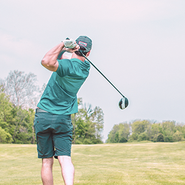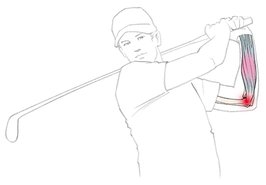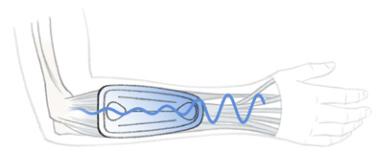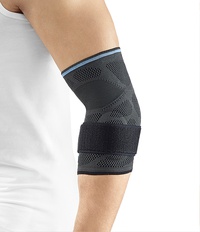Golfer's Arm or Golfer's Elbow
This article will explain the causes, symptoms, and treatment methods for golfer’s arm, also known as golfer’s elbow.
What is Golfer’s Arm?
Golfer’s Arm (epicondylitis humeri ulnaris or medialis) – also referred to as golf arm and golfer’s elbow – is a condition that causes pain on the inside of the elbow. It affects the tendons of the hand and finger flexors at the inner epicondylus (bone extension) of the humerus. In contrast to tennis elbow, the pain does not occur in the extensor muscles but the flexor muscles.
Not every golfer will suffer from golfer’s arm. The name of the disease can be traced back to the tee shot in golf, which puts a lot of strain on the inside of the elbow joint. Athletes aren’t the only people suffering from golfer’s arm as the same muscle group is also used in household activities (e.g. cutting vegetables) or when playing musical instruments (e.g. the guitar).

Common causes
Even brief occurrences of heavy strain can cause tendons to become irritated. Jerky muscle movements lead to small injuries, which are referred to as micro-traumas. These traumas rarely cause pain at first, allowing the person to keep moving their arm without experiencing any symptoms. However, if micro-traumas continue to occur, they can lead to golfer’s arm.
The following movements or activities can trigger golfer’s arm:
- Sports such as climbing, javelin throwing, and golfing
- Working with a computer
- Handicraft activities such as chopping wood, painting, or hammering
- Chopping cooking ingredients
- Gripping musical instruments such as a guitar or violin

Typical symptoms
When put under strain, the tendons of your forearm muscles attached to the bony bump on the inside of your elbow begin to hurt and become extremely sensitive to pressure. Pain can occur even if the arm is not put under heavy strain at the time, such as during rest periods. Closing the fist and bending the wrist, in particular, can cause pain.
If the condition advances, the pain usually radiates beyond the elbow into the upper and lower arm. If golfer’s arm is not treated, the disease can become chronic.

Conservative Treatment and Therapy
Golfer’s arm is treated similarly to tennis arm but occurs much less frequently. Surgery is only necessary in exceptional cases. The most important thing is to avoid incorrect loading and to protect the arm. Anti-inflammatory drugs such as Diclofenac can help to relieve pain in the short-term.
In addition to conservative physiotherapy, there are many non-surgical therapies that support healing. For instance, bandages can be used to support the irritated tendons of your forearm muscles and nerves optimally and thus accelerate the healing process.
The following treatments can also promote recovery, although they are often not covered by statutory health insurance: massages, acupuncture, ultrasound therapy, non-steroidal anti-inflammatory drugs, and ice packs.

Additional Information




